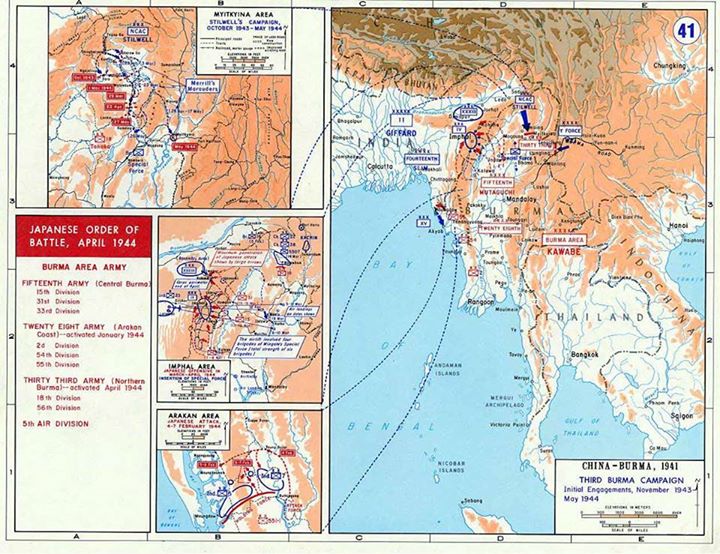
June 1944 - 18 July 1944
Battles of Imphal and Kohima
room India
people William Slim Mutaguchi Renya
The epic battles of Imphal and Kohima started on 4 April 1944 and ended with an Allied victory on 22 June 1944. They are considered by many to be the Asian equivalent of Stalingrad - pivotal battles that turned the tide of World War Two.
These battles were Japan's greatest embarrassment during the war; if Japan had won and been able to push onwards from Imphal into Bengal, the histories of India and Burma - perhaps the whole world - would have changed decisively.
Instead, the Allied victory secured the reopening of the "Stilwell Road" to China (named after General Joseph Stillwell) and made possible the reconquest of Burma. The Japanese army was forced to retreat, across the Chindwin River, then the Irrawaddy River, with the Allies capturing Meiktila and Mandalay a year later, and Rangoon in May 1945.
Over 70,000 men - Japanese, Indian, British, and Burmese - were killed or wounded during the more than three-month long battles. The British Fourteenth Army in Burma was the largest fighting force in the world at the time - with over one million men, some 700,000 of whom were Indians. It was also the most diverse, with Indians, Africans, Gurkhas, Burmese, British, Canadians, Australians and others fighting side-by-side against the Japanese.
In Myanmar today, there appears to be very little awareness of the anniversary of these battles though the epitaph at the cemetery in Kohima is world famous:
“When you go home
Tell them of us and say
For your tomorrow
We gave our today”
The map shown is from the United States Military Academy Department of History's online atlas of US military campaigns, showing the "Third Burma Campaign" of World War Two and the location and troops involved in the initial engagements from November 1943 to May 1944.